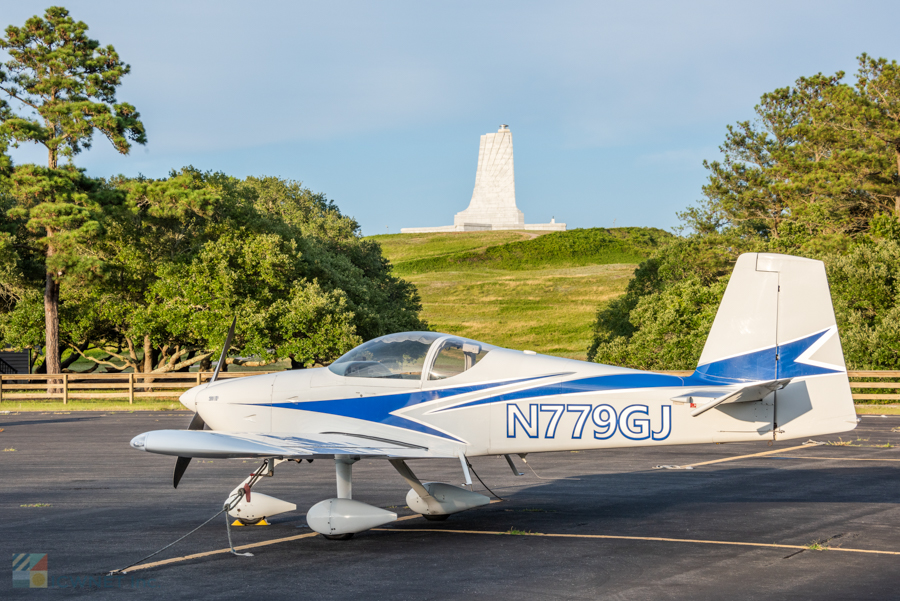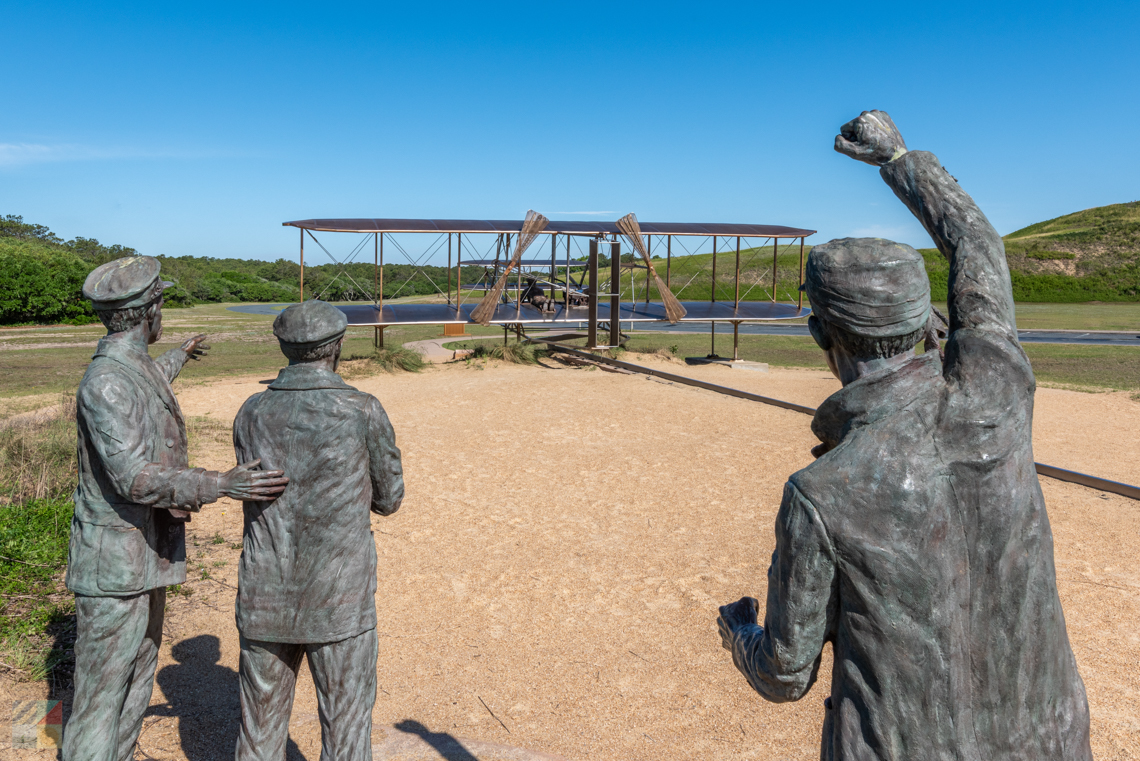
With the exception of local family stories and legends, Kill Devil Hills' history is hard to trace prior to the Wright Brothers' historic First Flight in 1903. In fact, even the origin of the town's fascinating name is not certain, and the many theories that surround the moniker involve pirates, shipwrecked buccaneers, and barrels of rum strong enough to "kill the devil."
What historians do know is that the community was first populated by Native Americans, and then by a rugged band of settlers who set up a small fishing and sustainable farming community where they were isolated, but lived peacefully.
The population swelled with the establishment of the Kill Devil Hills Life Saving Station in 1878, and by the time the Wrights arrived, there were small but habitable lodgings and camp sites, a couple stores, and enough amenities to keep them accommodated during their long winter months of testing.
After the Wright Brothers' headline-grabbing achievement, however, Kill Devil Hills developed a national reputation first as a historic site, then as a tourist destination, and finally as the booming beach town it is today. After the town was incorporated in the 1950s, and motels and a pier were constructed in the 1950s and 1960s, the town was no longer a quiet community of salty locals - it was a viable beach destination that attracted vacationers from all across the East Coast
The following is timeline of the events that allowed Kill Devil Hills to grow into the 6,000 year-round resident community that it is today.
- 1700s and 1800s - Kill Devil Hills is inhabited by a small group of local farmers and fishermen.
- 1809 - The first mention of Kill Devil Hills appears on area maps.
- 1878 - The Kill Devil Hills Life Saving Station, one of 11 lifesaving stations along the Outer Banks coastline, is established across from the current Wright Brothers monument.
- 1900 - The Ohio-based Wright Brothers, Orville and Wilbur, choose Kitty Hawk and Kill Devil Hills as the location to test their new flying machines, and fly their first manned glider from the tall soundside dunes. The first flight is unsuccessful.
- 1901-1902 - The Wrights test two more gliders in Kill Devil Hills / Kitty Hawk, with mixed but subsequently better results.
- December 17th, 1903 - The Wright Brothers make the first controlled and sustained power flight. A now iconic photo of the airplane hovering above the ground is broadcasted across the world.
- 1911 - Orville Wright returns to Kill Devil Hills and sets a new world glider record, with a total airtime of 9 minutes and 45 seconds. The flight and the glider earn the quotable title of "The last Flying Machine at Kitty Hawk."
- 1927 - Calvin Coolidge signs a bill granting $50,000 for the construction of the Wright Brothers Memorial
- 1930 - The design is chosen for the Wright Brothers Memorial, and an additional $150,000 is granted to the construction of the granite monument.
- 1932- The Wright Brothers Memorial opens to the public and is dedicated with Orville in attendance. Orville becomes the first person to see a national memorial dedicated to him while still alive.
- 1933 - The Kill Devil Hills Life Saving Station is closed. It is later purchased by the Twiddy family in 1986 and moved to Corolla to serve as an office.
- 1953 - The town of Kill Devil Hills is officially incorporated, adopting the longstanding "Kill Devil Hills" moniker
- 1953 - The National Park Service celebrates the 50th anniversary of the Wright Brothers' flight by constructing two replica gliders to display at a new Visitors Center. The Memorial is soon transitioned into a National Park.
- 1958 - The Avalon Fishing Pier is constructed, becoming one of the first piers along the Outer Banks.
- 1960s - A series of motels and restaurants are built to accommodate the new "beach traffic" of fishermen and families.
- 2003 - Kill Devil Hills celebrates the Centennial of Flight - a week-long celebration with acclaimed visitors including Neil Armstrong, Buzz Aldrin, and President George W. Bush.

Historic Sites
The most notable site in Kill Devil Hills is the Wright Brothers Monument - an impressive granite structure complete with an accompanying Visitors Center and museum.
The monument and the adjacent Visitors Center are open daily from 9:00 a.m. until 5:00 p.m. 7 days a week, except for Christmas Day. The cost to access the park is around $4.00 for adults 16 years and older.
Other Historic Sites in the central Outer Banks region which are within a 30 minute drive include the following:
- Fort Raleigh National Historic Site - Manteo
- Roanoke Island Festival Park - Manteo
- Bodie Island Lighthouse - Bodie Island (South of Nags Head on NC Highway 12)
- Chicamacomico Lifesaving Station - Rodanthe
- Currituck Beach Lighthouse - Corolla
- The Whalehead in Historic Corolla - Corolla

Off the beach, one of the best activities for groups to enjoy in the Outer Banks is mini golf, bumper cars or Go-Karts. Thankfully, Paradise Fun Park offers all three activities! Paradise Fun Park offers exciting outdoor activities that kids and...
When you first catch sight of The Jolly Roger, you might be unsure exactly what to think of it. Since its conversion from a gas station/grocery store to a restaurant in 1972, The Jolly Roger has been anything but your ordinary Outer Banks...
The noted explorer, archaeologist, anthropologist, paleontologist, and part-time plumbing contractor from the University of Chicago, Professor Duffer A. Hacker, led two expeditions to the outer banks in the late 1920’s. The purpose of these...
Welcome to the home of the happy oyster where for over 40 years the oyster has been our world. The Outer Banks only authentic oyster bar is the place to enjoy sensational fare from the sea washed down with your favorite brew or cocktail. We serve by...




